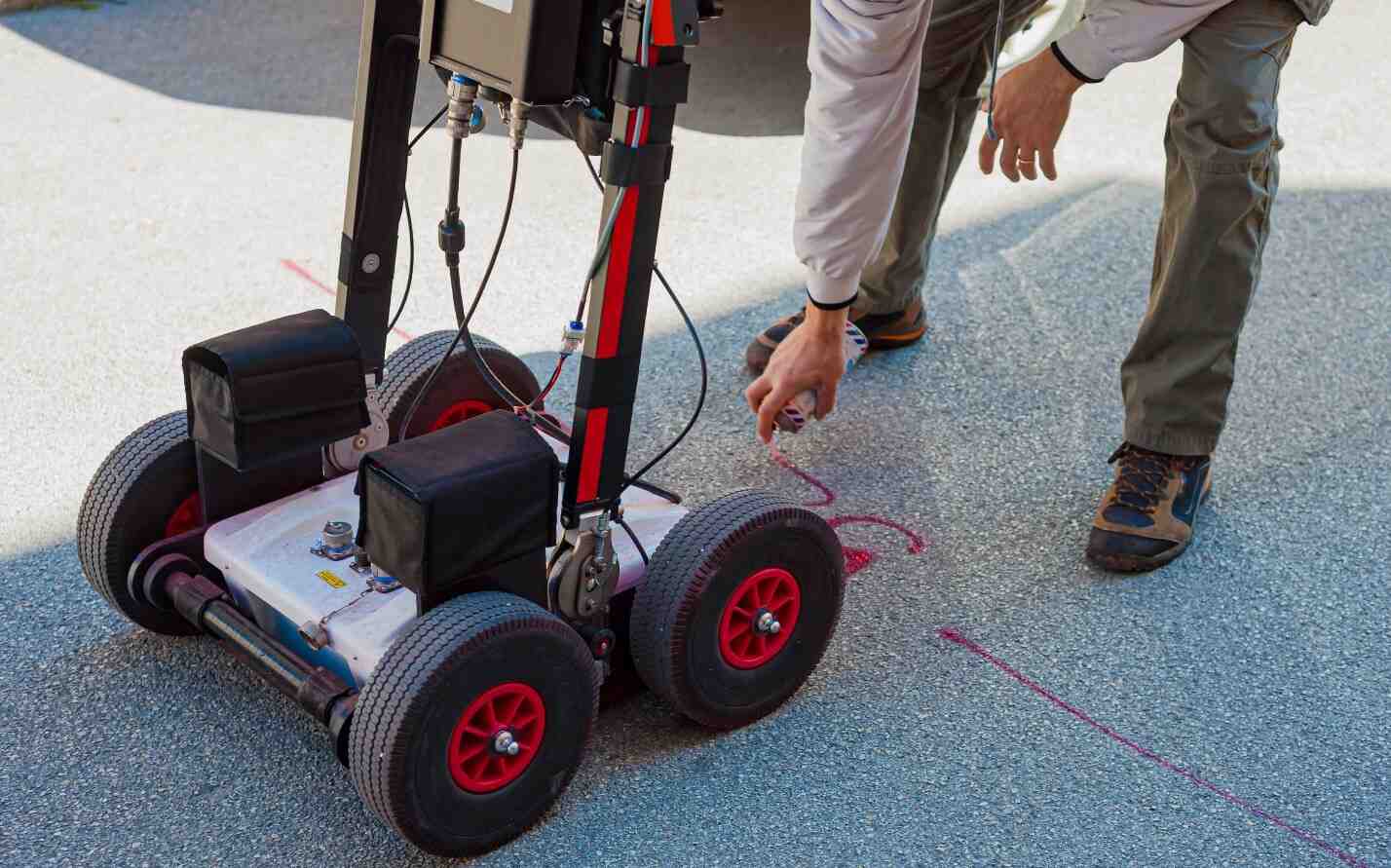Ground Penetrating Radar (GPR) and Utility Locating Services

Ground Penetrating Radar and Utility Locating Services
Construction and excavation projects, no matter the scale, present a significant challenge when identifying what lies beneath the surface. From embedded utilities to unseen structural faults, the unknowns can lead to costly mistakes, delays, or safety hazards. Ashton Sawing and Drilling LLC offers Ground Penetrating Radar (GPR) and utility locating services in Texas and Louisiana to provide precise insights into subsurface conditions. If you’re looking to ensure safety and efficiency in your construction, excavation, or renovation project, don’t hesitate to give us a call. Our team leverages cutting-edge technology to help you complete your project safely and effectively.
Benefits of GPR and Utility Locating Services
GPR and utility locating services provide numerous benefits, making them indispensable for modern construction, renovation, and infrastructure projects. These advanced technologies help detect underground utilities, structures, and potential hazards with precision, minimizing the risk of costly damages or delays. Key benefits include:
- Precise and Non-Invasive Detection – Unlike traditional methods, GPR scans use radar pulses to detect subsurface objects without the need for invasive digging or drilling. This allows for safe and accurate detection of underground utilities, concrete reinforcements like rebar and post-tension cables, and voids, cavities, and other anomalies within concrete or soil.
- Improved Safety – GPR can pinpoint the location of utilities and potential hazards, significantly reducing the risk of accidental damage. For example, it prevents contractor strikes on live wires or pipelines and identifies voids or weak points in structures that may lead to collapse. This ensures worker safety and compliance with safety standards on construction sites.
- Cost and Time Efficiency – Time is money on a construction site. GRP scanning can avoid delays caused by unforeseen obstructions not accounted for during initial project planning. In addition, it can reduce project downtime by enabling preemptive solutions to detected issues and save costs associated with fixing damage to utilities caused by guesswork or invasive inspections.
- Better Accuracy for Project Planning – The real-time data offered by GPR ensures builders and engineers have access to precise subsurface maps. This is particularly important for designing or modifying plans without disrupting existing infrastructure and providing clear and actionable insights to stakeholders for improved decision-making.
Our GRP Scanning Process
Understanding the process of ground radar scanning provides confidence in its reliability. Here’s how it works:
- Project Assessment – The first step involves thoroughly understanding the site’s requirements. Our experts determine factors such as the depth of penetration needed, potential hazards, and key areas of interest.
- GPR Scanning in Action – Using high-frequency radar pulses, the GPR system emits electromagnetic waves into the surface. As waves encounter buried utilities, voids, or other structures, they’re reflected back to the scanner, creating a precise map of what’s underground.
- Data Analysis – Advanced software processes the radar signals to generate clear visuals of subsurface conditions. Our experienced technicians interpret this data to identify and locate utilities, rebar, or other targets.
- Results and Recommendations – The results are then shared in a report, often accompanied by 3D subsurface maps. We provide detailed recommendations on how to proceed while avoiding identified obstructions or hazards.
Applications of GPR and Utility Locating Services
From construction to preservation, GPR and utility locating services play a crucial role in a variety of projects, providing precision and safety. Here are some common applications:
- Concrete Scanning – Our GPR services accurately detect rebar, post-tension cables, and other embedded objects in concrete before drilling or cutting. This helps prevent costly damage and ensures site safety.
- Underground Utility Detection – During excavation or construction, we can locate essential utilities such as gas lines, water pipes, and electrical conduits. Avoiding these utilities reduces the risk of accidents or service interruptions.
- Geotechnical Investigations – GPR is a valuable tool for analyzing soil conditions, identifying underground voids, and assessing subsurface materials. This information is critical for planning and ensuring the stability of construction projects.
- Environmental Surveys – We use GPR to identify buried tanks, contamination hotspots, or other environmental hazards, providing essential data for cleanup efforts and regulatory compliance.
- Restoration Projects – Mapping structural vulnerabilities in historical sites is made easier with GPR, enabling restoration teams to preserve architectural integrity while addressing hidden issues like voids or weakened sections.
A Simplified Approach to Subsurface Scanning
Whether you’re planning a small renovation or managing a large-scale construction project, adopting GPR and utility locating services ensures better project outcomes. By leveraging these services, businesses can save valuable time, minimize risks, avoid potential damage, and significantly enhance productivity. If you’re looking for reliable GPR concrete scanning or utility locating services, contact us today. Whether it’s identifying obstacles before you dig or confirming structural details, we’re here to help you safeguard your project at every stage with accuracy and efficiency.
